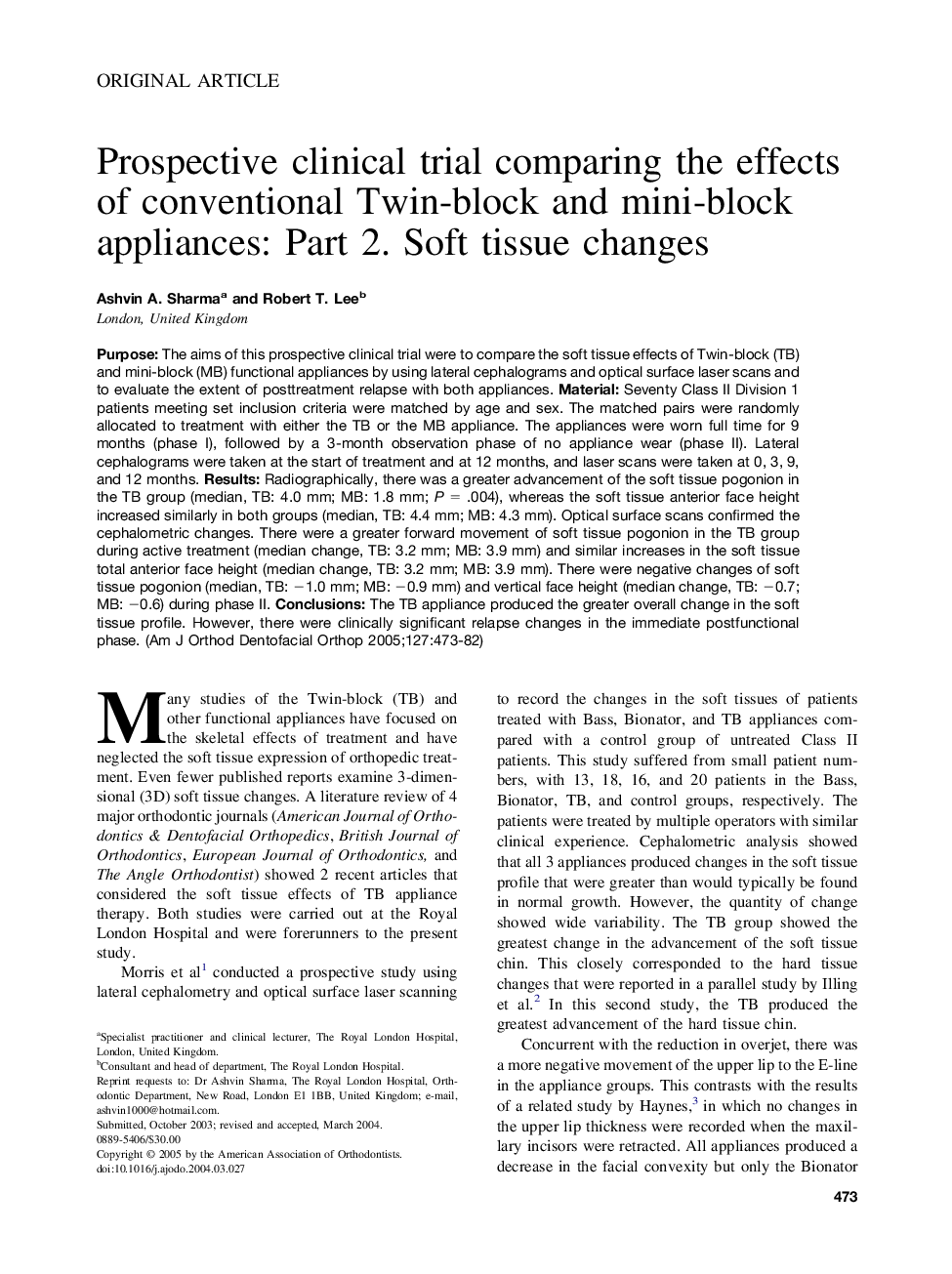| Article ID | Journal | Published Year | Pages | File Type |
|---|---|---|---|---|
| 9992993 | American Journal of Orthodontics and Dentofacial Orthopedics | 2005 | 10 Pages |
Abstract
Purpose: The aims of this prospective clinical trial were to compare the soft tissue effects of Twin-block (TB) and mini-block (MB) functional appliances by using lateral cephalograms and optical surface laser scans and to evaluate the extent of posttreatment relapse with both appliances. Material Seventy Class II Division 1 patients meeting set inclusion criteria were matched by age and sex. The matched pairs were randomly allocated to treatment with either the TB or the MB appliance. The appliances were worn full time for 9 months (phase I), followed by a 3-month observation phase of no appliance wear (phase II). Lateral cephalograms were taken at the start of treatment and at 12 months, and laser scans were taken at 0, 3, 9, and 12 months. Results Radiographically, there was a greater advancement of the soft tissue pogonion in the TB group (median, TB: 4.0 mm; MB: 1.8 mm; P = .004), whereas the soft tissue anterior face height increased similarly in both groups (median, TB: 4.4 mm; MB: 4.3 mm). Optical surface scans confirmed the cephalometric changes. There were a greater forward movement of soft tissue pogonion in the TB group during active treatment (median change, TB: 3.2 mm; MB: 3.9 mm) and similar increases in the soft tissue total anterior face height (median change, TB: 3.2 mm; MB: 3.9 mm). There were negative changes of soft tissue pogonion (median, TB: â1.0 mm; MB: â0.9 mm) and vertical face height (median change, TB: â0.7; MB: â0.6) during phase II. Conclusions The TB appliance produced the greater overall change in the soft tissue profile. However, there were clinically significant relapse changes in the immediate postfunctional phase.
Related Topics
Health Sciences
Medicine and Dentistry
Dentistry, Oral Surgery and Medicine
Authors
Ashvin A. Sharma, Robert T. Lee,
